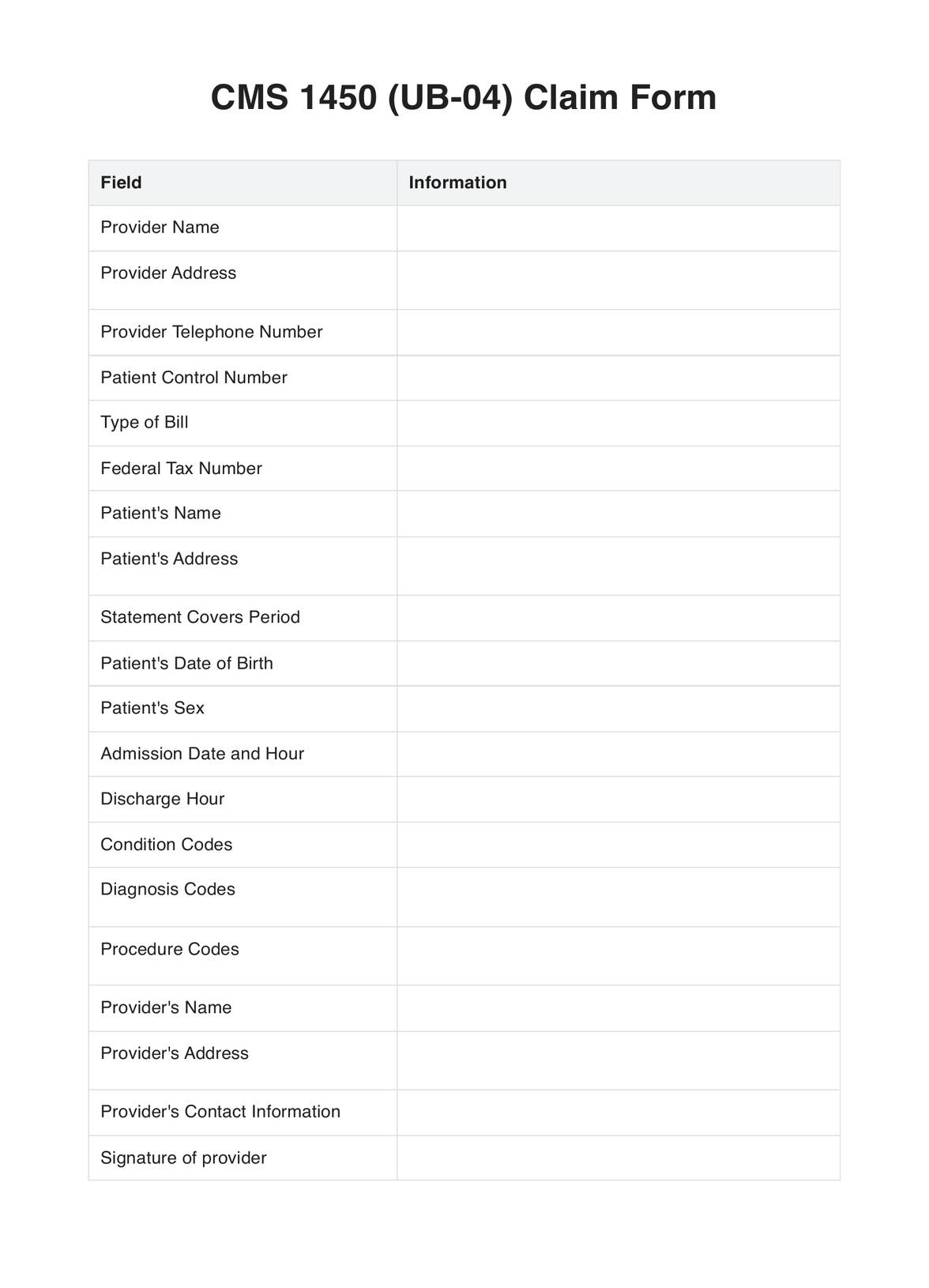The CMS 1450, or the UB-04 form, is primarily used by institutional providers like hospitals, nursing facilities, and outpatient clinics. It's used to bill Medicare Administrative Contractors (MACs) when a paper claim is allowed.

CMS 1450 Claim Form
Explore CMS 1450s, used by healthcare providers for billing Medicare and other insurers. Ensuring accuracy on these forms leads to efficient reimbursements.
CMS 1450 Claim Form Template
Commonly asked questions
The CMS 1450 form is used when an institutional provider must submit a reimbursement claim to Medicare or Medicaid. This could be due to providing healthcare services like treatments, procedures, or supplies. It's typically used when electronic billing is not feasible.
The CMS 1450 form is filled out with information about the institutional provider, the patient, and the services provided. This includes details like the patient's diagnosis, procedures performed, dates of service, and charges. Once completed, it's submitted to the relevant MAC for processing and payment. Software like Carepatron can help streamline completing and submitting these forms.
EHR and practice management software
Get started for free
*No credit card required
Free
$0/usd
Unlimited clients
Telehealth
1GB of storage
Client portal text
Automated billing and online payments











